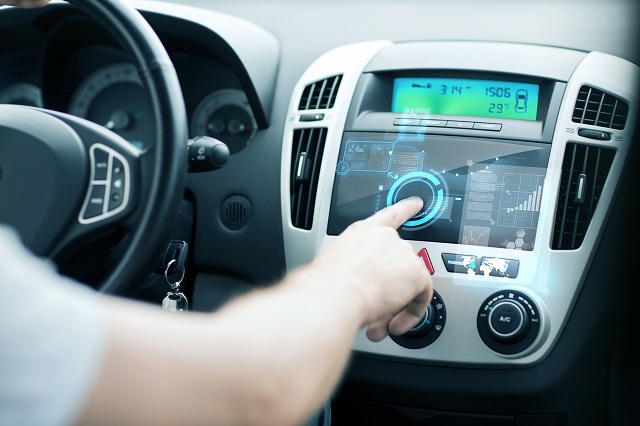Smart car
technologies save drivers $6.2 billion on fuel costs each year
Stevens Institute of Technology
 During busy traveling
holidays of the year, drivers may be focusing on getting to grandma's house, not on what smart car technologies are saving them in fuel
costs.
During busy traveling
holidays of the year, drivers may be focusing on getting to grandma's house, not on what smart car technologies are saving them in fuel
costs. But in the first study to assess the energy impact of smart technology in cars, researchers at Stevens Institute of Technology have put a number on the potential fuel-cost savings alone: $6.2 billion.
"That's not
insignificant," said Yeganeh Hayeri, an assistant professor at Stevens
whose work lies at the intersection of civil and environmental engineering and
public policy.
"That translates to between $60 and $266 in the pocket of car owners every year, not to mention additional savings created for each driver due to more smoothly-flowing traffic, fewer accidents and aerodynamic efficiency of all other vehicles on the road."
"That translates to between $60 and $266 in the pocket of car owners every year, not to mention additional savings created for each driver due to more smoothly-flowing traffic, fewer accidents and aerodynamic efficiency of all other vehicles on the road."
While many studies have looked at
the social impacts of driverless cars with high levels of automation, this
study is the first to look at the energy impact on lower levels of automation
and individual technologies that are either already introduced in our cars,
pickup trucks and sport-utility vehicles or will be in the next few years.
To figure out the impact of these
technologies on fuel-saving cost, Hayeri and her colleagues at Stevens, including
Saeed Vasebi, a graduate student in Hayeri's lab, and Carnegie Mellon
University conducted a comprehensive review of the literature on the energy and
safety impacts of automated features, providing precise data for predicting how
these features would affect fuel consumption nationwide.
Using these data, they then analyzed
the benefits and costs associated with each automation technology, which were
categorized into three groups: warning systems (i.e. for lane departures, blind
spots, forward collisions, speed limit detection, and traffic warnings),
control systems (i.e. for adaptive cruise control, collision detection braking,
active braking and cooperative adaptive cruise control) and information systems
(i.e. parking aid system and dynamic route guidance.)
In their work, recently reported
in Transportation Research Record, Hayeri, Vasebi and colleagues
show that drivers of low-level automated vehicles (those equipped with all
technologies considered in this study) could reduce fuel consumption by 27 to
119 gallons per year for each vehicle.
This saving equals from 6 to 23 percent of average fuel consumption in the U.S. and could save each vehicle owner up to $60 to $266, as mentioned above.
This saving equals from 6 to 23 percent of average fuel consumption in the U.S. and could save each vehicle owner up to $60 to $266, as mentioned above.
This Thanksgiving weekend, it is
estimated that 54.3 million Americans are planning a road trip, a 4.8 percent
increase over last year, despite drivers expecting to pay the highest
Thanksgiving gas prices in four years, according to AAA.
That means traffic congestion, construction, a dearth of parking, idling engines at stoplights, intersections and construction zones, not to mention getting lost.
That means traffic congestion, construction, a dearth of parking, idling engines at stoplights, intersections and construction zones, not to mention getting lost.
"Knowing when and where congestion will build can help drivers avoid the stress of sitting in traffic," said Hayeri.
"What we did is put a number of fuel-saving costs that come with technologies that assist us with making smarter choices on the road. We hope to use this information for improving future transportation, and consequentially improve the environment, save lives and keep the air we breathe cleaner."